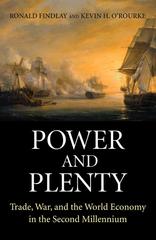(e) Keeping the new discount factor from the previous part, consumer B's income in period 1 drastically decreases so that y = 10. In the new equilibrium, which of the following is true? ONone of these are true OBoth consumer A and B are borrowers OConsumer A is a saver and consumer B is a borrower OConsumer A is a borrower and consumer B is a saver OBoth consumer A and B are saversAn economy is described by the following equations. Assume an open economy under the assumptions of the Mundell-Fleming model with perfect capital mobility. C = 20, 000 + 0.5(Y - T) I = 100, 000 - 1000r G = 25, 000 T = 25, 000 Md P = 2Y - 20000r M : P = 100, 000 CA = NX = 100, 000 - 5000s * = 15 (a) Equilibrium output in this economy is and the equilibrium exchange rate is (b) At this equilibrium, the country is None of these OExporting the same amount as it is importing 20.7 OImporting more than it is exporting 25.3 23.5 OExporting more than it is importing 24.3An economy is described by the following equations. Assume an open economy under the assumptions of the Mundell-Fleming model with perfect capital mobility. C = 20, 000 + 0.5(Y - T) I = 100, 000 - 1000r G = 25, 000 T = 25, 000 Md P = 2Y - 20000r M : P = 100, 000 CA = NX = 100, 000 - 50006 r= 15 (a) Equilibrium output in this economy is and the equilibrium exchange rate is $ (b) At this equilibrium, the country is None of these OExporting the same amount as it is imp 300,000 OImporting more than it is exporting 870,000 170,000 OExporting more than it is importing 200,000(c) In the equilibrium above, which of the following is true? OBoth consumer A and B are borrowers ONone of these are true Both consumer A and B are savers Consumer A is a saver and consumer B is a borrower OConsumer A is a borrower and consumer B is a saver (d) Consumer A's discount factor changes to BA = 0.8. The endowments remain the same. In the new equilibrium, which of the following is true? (Hint: You do not need to solve explicitly for the next two questions - use your intuition) Both consumer A and B are savers OConsumer A is a borrower and consumer B is a saver ONone of these are true Both consumer A and B are borrowers Consumer A is a saver and consumer B is a borrower










